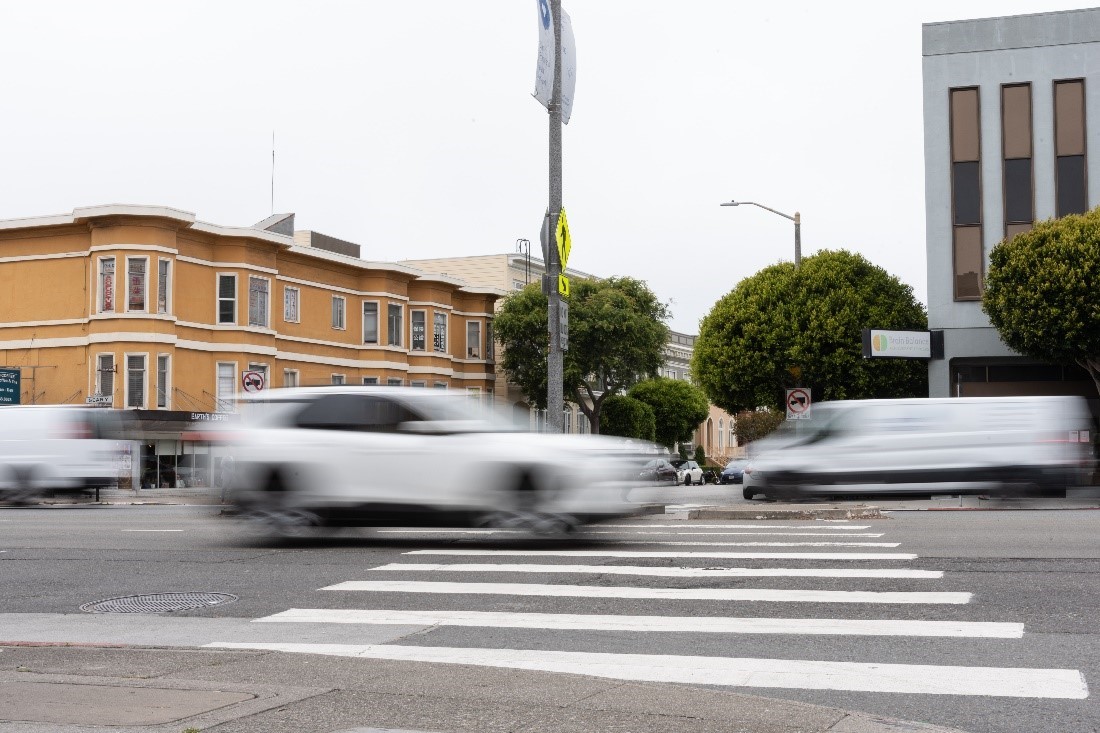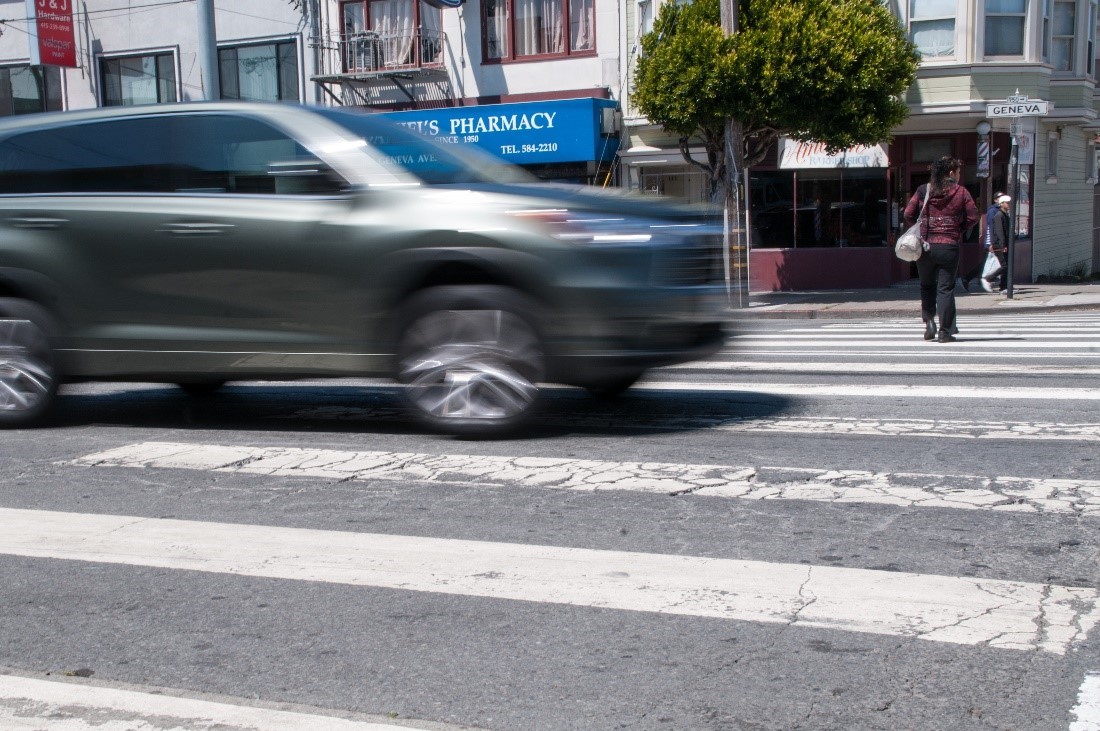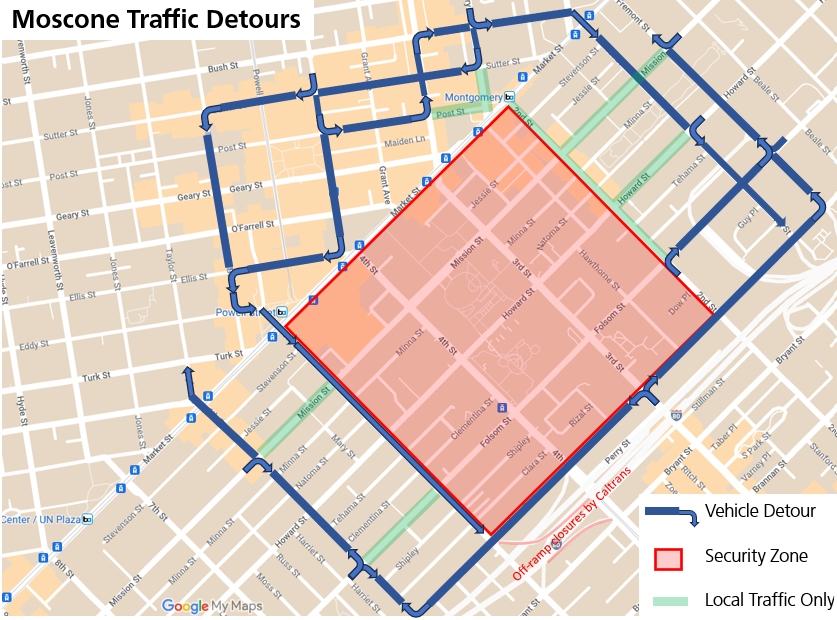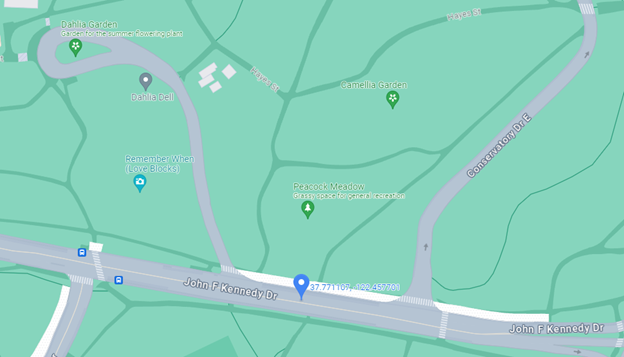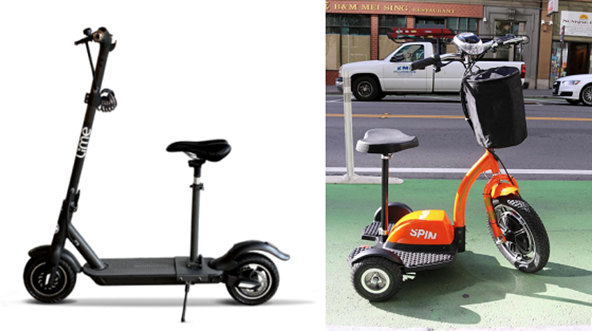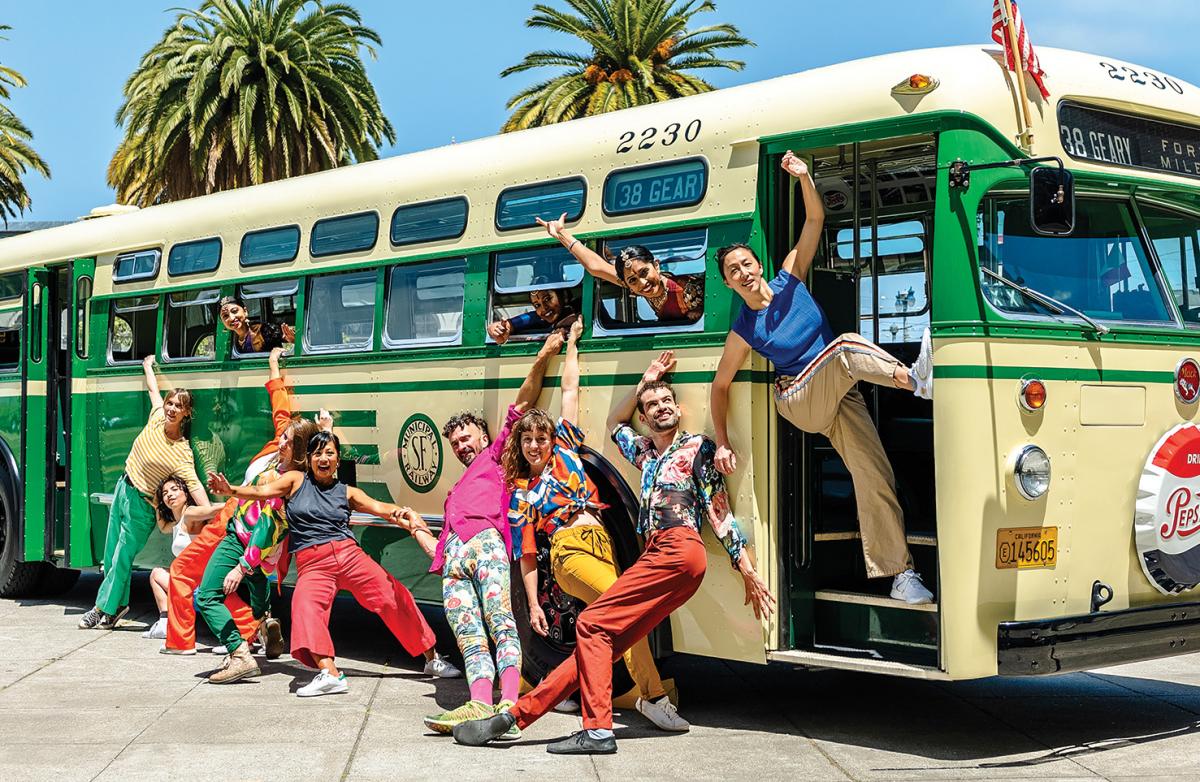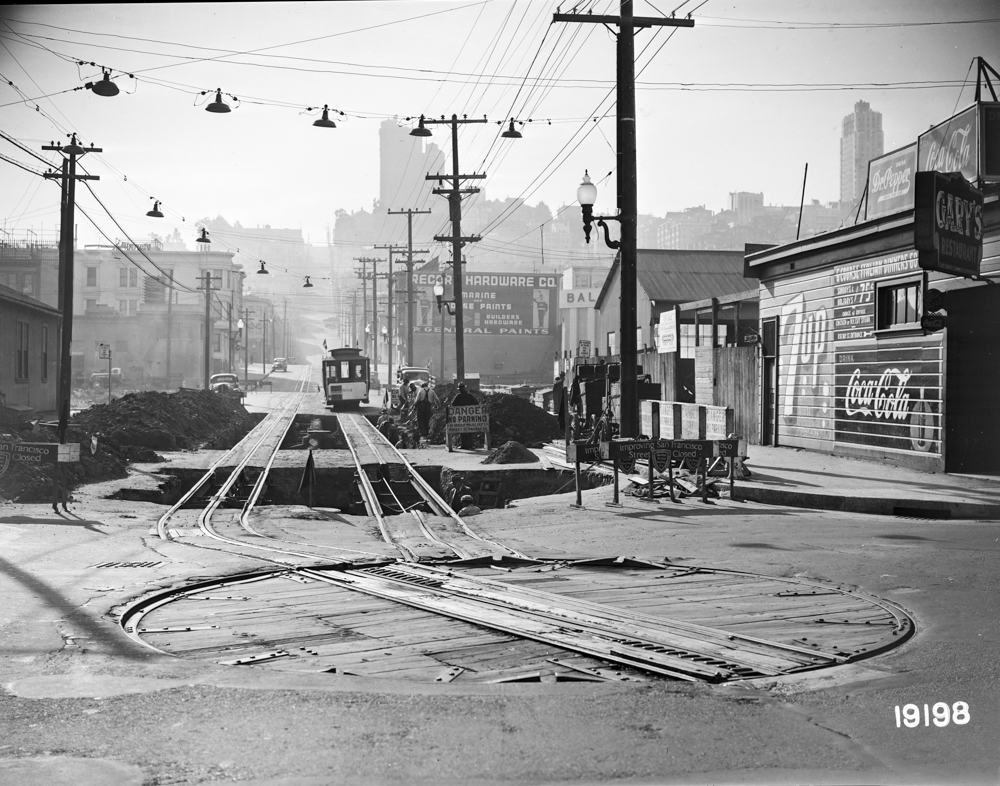Temporary Parking Changes Will Support Valencia Street Businesses
By Melissa Culross
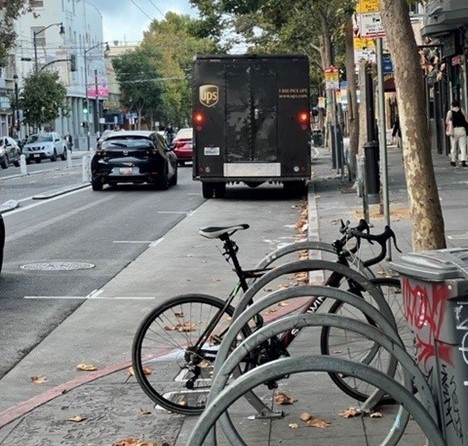
Cars, bicycles and delivery vehicles all share space along Valencia Street. Photo credit: Shayda Haghgoo, SFMTA.
Valencia Street is home to one of the city's most eclectic and culturally diverse sets of restaurants, shops, nightlife and essential services. The heavily traveled corridor attracts residents and visitors of all ages and interests who get there by walking, biking, rolling and driving.
As part of our work to make Valencia Street safe and inviting for everyone, we’re making some temporary changes to our loading zones beginning this week to create more general parking on the corridor during the holiday season. These changes will help customers who drive patronize Valencia businesses while keeping the street safe for people on foot, bicycles and scooters. Small businesses are an important part of all that makes San Francisco the incredibly special city that it is, and we all benefit when they succeed.
In the years since the COVID-19 pandemic hit, the Shared Spaces Program’s parklets and weekend block closures along Valencia have offered a lifeline for businesses and created space for neighbors to come together in joy and community. At the same time, the parklets removed commercial and passenger loading space and parking spaces, and there has been an increase in pick-up and delivery business. The result has been increased competition for limited curb space.
In response to the concerns of struggling local businesses, we are temporarily adjusting the type and duration of many of the loading zones on Valencia Street between 15th and 23rd streets and on several side streets (18th, 19th, 20th, 22nd) to create more general parking availability in the neighborhood. These temporary changes will be in effect while the project team evaluates permanent curb changes that would be made in early 2024.
Short-Term Adjustments to Support Small Businesses
-
We are temporarily turning just over a third (34%) of the loading zones that we recently installed into general parking after 12 noon.
-
We are also temporarily turning the vast majority (82%) of the new loading zones into general parking after 6 p.m. Previously they ended at 10 p.m.
-
We are temporarily converting about a third (34%) of the 6-wheel loading spaces into regular commercial loading spaces.
In addition to on-street parking, the SFMTA operates two garages in the neighborhood: the Mission-Bartlet garage at 3255 21st Street and 16th and Hoff garage at 42 Hoff Street. Parking rates at the Mission Bartlett garage range from $2.00 an hour to $5.00 an hour, depending on the time of day, and the rate at the 16th and Hoff garage is $4.00 an hour (see lists below). Drivers who park in either garage are likely to spend less time looking for a space than those who choose to park on the street, and up-to-date space availability information for the Mission Bartlett garage can be found at our Demand-Responsive Parking Pricing page (SFMTA.com/ParkingRates).
Mission Bartlett Garage: Open Sunday to Thursday from 7 a.m. to 10 p.m., and Friday to Saturday from 7 a.m. to 12 a.m. Parking rates by time are in the list below:
-
12 a.m. to 9 a.m.: $2 per hour.
-
9 a.m. to 12 p.m.: $3 per hour.
-
12 p.m. to 3 p.m.: $5 per hour.
-
3 p.m. to 6 p.m.: $3 per hour.
-
6 p.m. to 12 a.m.: $5 per hour.
16th & Hoff Garage: Open daily from 8 a.m. to 9:30 p.m. Parking is $4 per hour all day.
Meanwhile, we offer neighborhood businesses the opportunity to purchase parking validation stickers at half price. This allows businesses to offer their customers and employees discounted parking at Mission-Bartlet and Hoff Street garages at a very low cost. Interested merchants can reach out to David Dunham at David.Dunham@sfmta.com or 415.701.4604.
The Mid-Valencia Bikeway Pilot Project
We began efforts to improve bikeways along Valencia in 2018 to make the street work better for everyone, and the Mid-Valencia Bikeway pilot project began on August 1, 2023. The pilot includes the following changes:
-
Center-running bikeway to provide a dedicated and clear path for people on bikes.
-
Turning restrictions to eliminate or reduce the likelihood of collisions involving turning vehicles.
-
The restriction of parking near intersections, known as “daylighting,” to help drivers to see people about to cross the street.
-
Curb management changes to provide more space for loading vehicles and prevent drivers from double parking.
We are closely evaluating the pilot’s design and will consider adjustments to improve safety and effectiveness. Public input and experiences are instrumental in this process.
Valencia serves as a major bike route, but most of the corridor is on the city's Vision Zero High Injury Network, the 12% of streets that account for 68% of the city's fatal and severe traffic collisions. While there is no perfect solution, we are committed to improving safety for bicyclists and pedestrians while preserving the economic vitality of Valencia Street.
As we move forward, SFMTA staff plan to return to the agency’s Board of Directors in early 2024 with an update on how the pilot project is performing. Safety remains our top priority, and our evaluation will encompass a comprehensive range of factors. These include measuring bikeway blockages, vehicle turn restriction compliance, close calls, vehicle speeds and bicycle and vehicle behavior at new intersections with bike signals. Beyond these metrics, we will assess the effectiveness of the new curb management plan, traffic and user volumes, emergency vehicle access, and the interaction of cyclists with the center-running protected bikeway. This evaluation will help us understand how the pilot design is working and whether we need to revise it for enhanced safety and efficiency.
Two studies are also underway to help inform a future design for Valencia. The first is focused on traffic and circulation to assess the impacts of various design concepts. The second is a public realm/public space study to consider how we can ensure that the corridor is a great place to visit and spend time outside.
Questions or comments? You can send feedback about the Mid-Valencia Bikeway pilot and the corridor, in general, to Valencia@SFMTA.com, and updates are available at our Valencia Bikeway Improvements project page (SFMTA.com/Valencia).
Published November 21, 2023 at 11:40PM
https://ift.tt/9lAPMHF
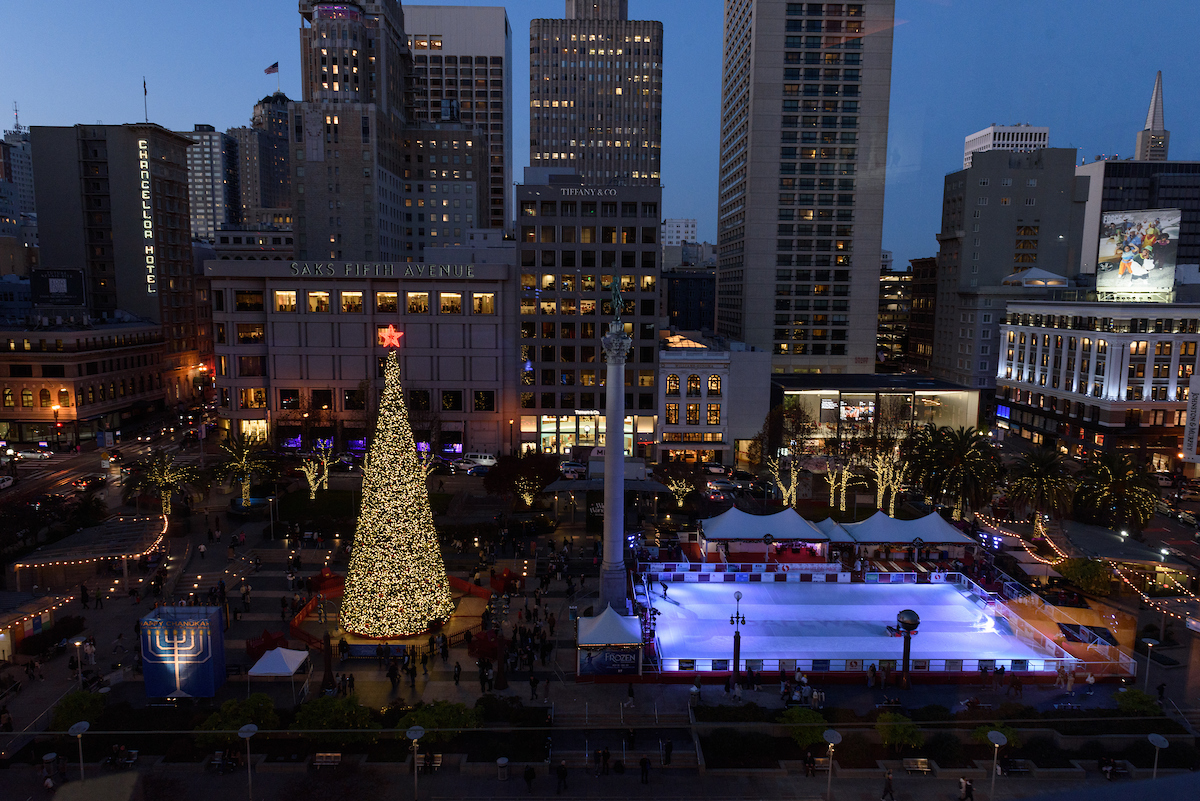 Holiday Scenes in Union Square.
Holiday Scenes in Union Square.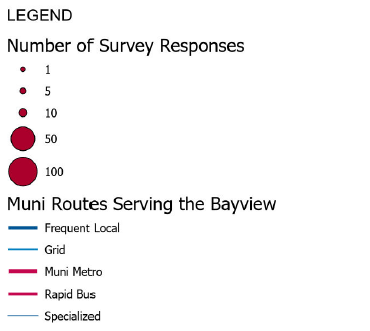
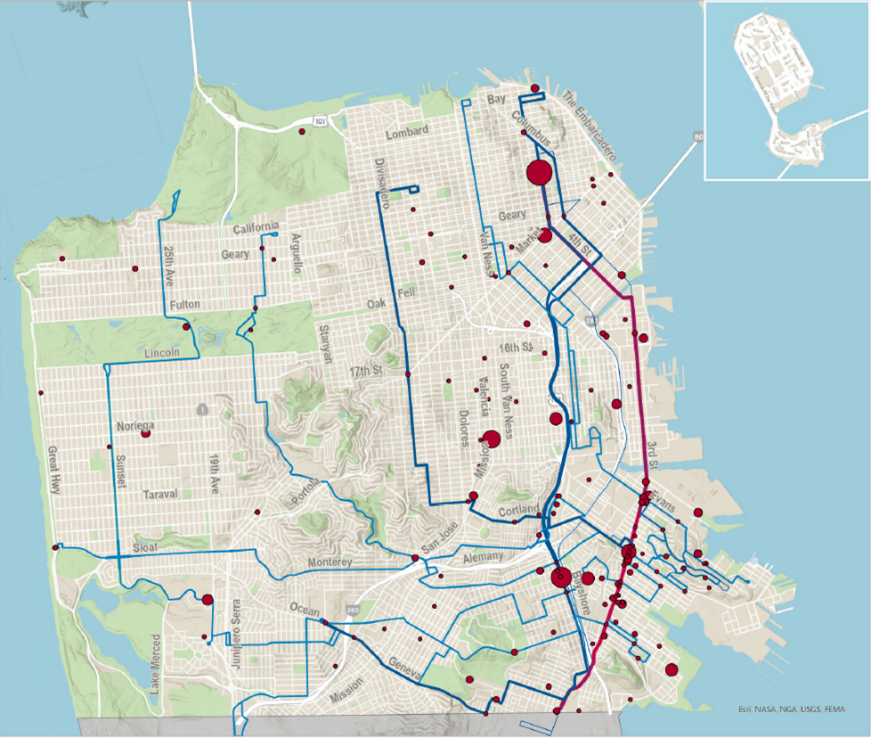
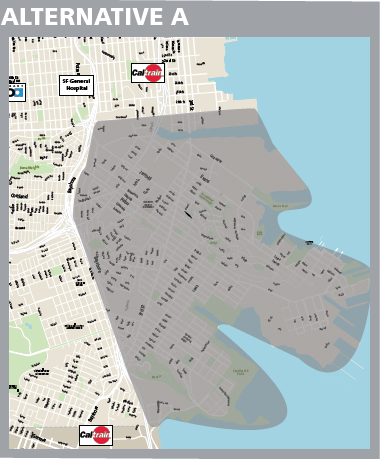
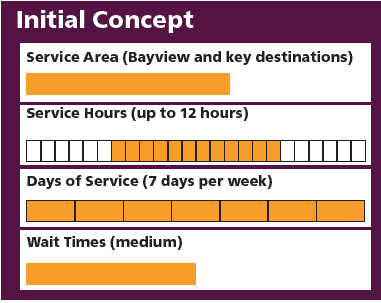
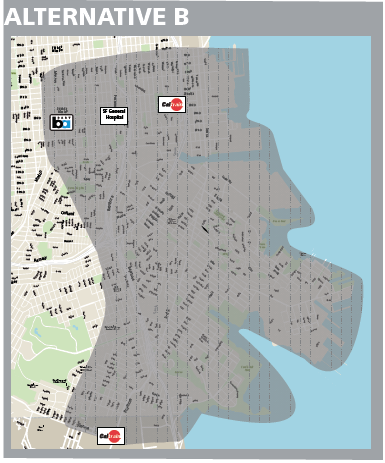
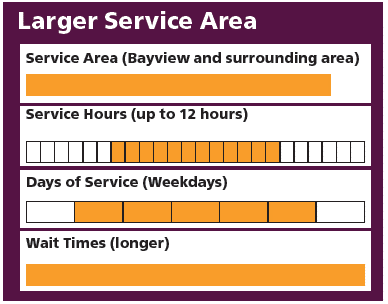
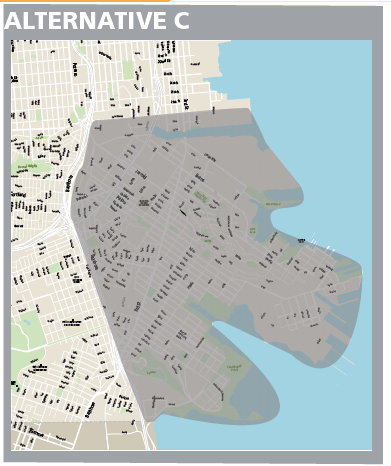
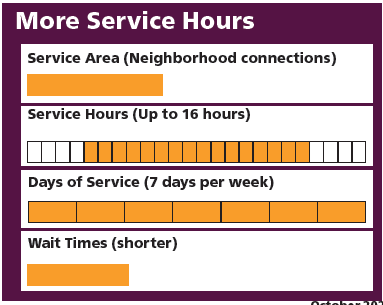
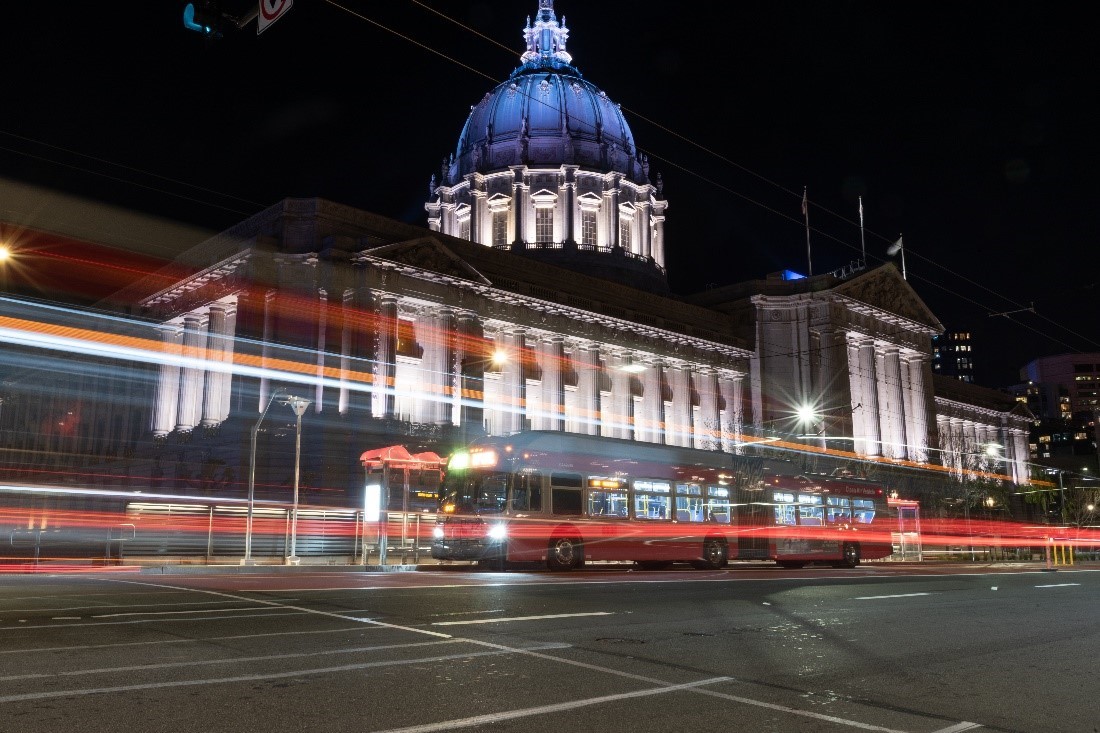 Ride Muni for free during New Year's Eve.
Ride Muni for free during New Year's Eve. 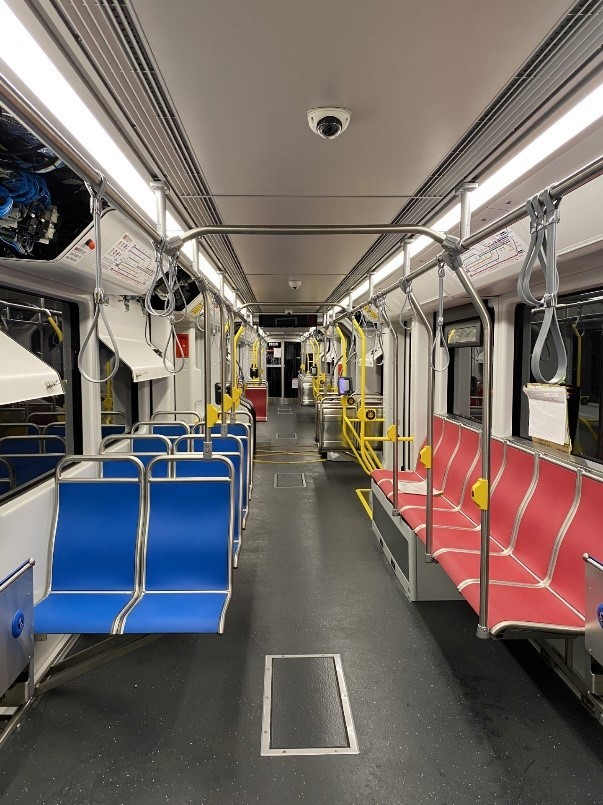
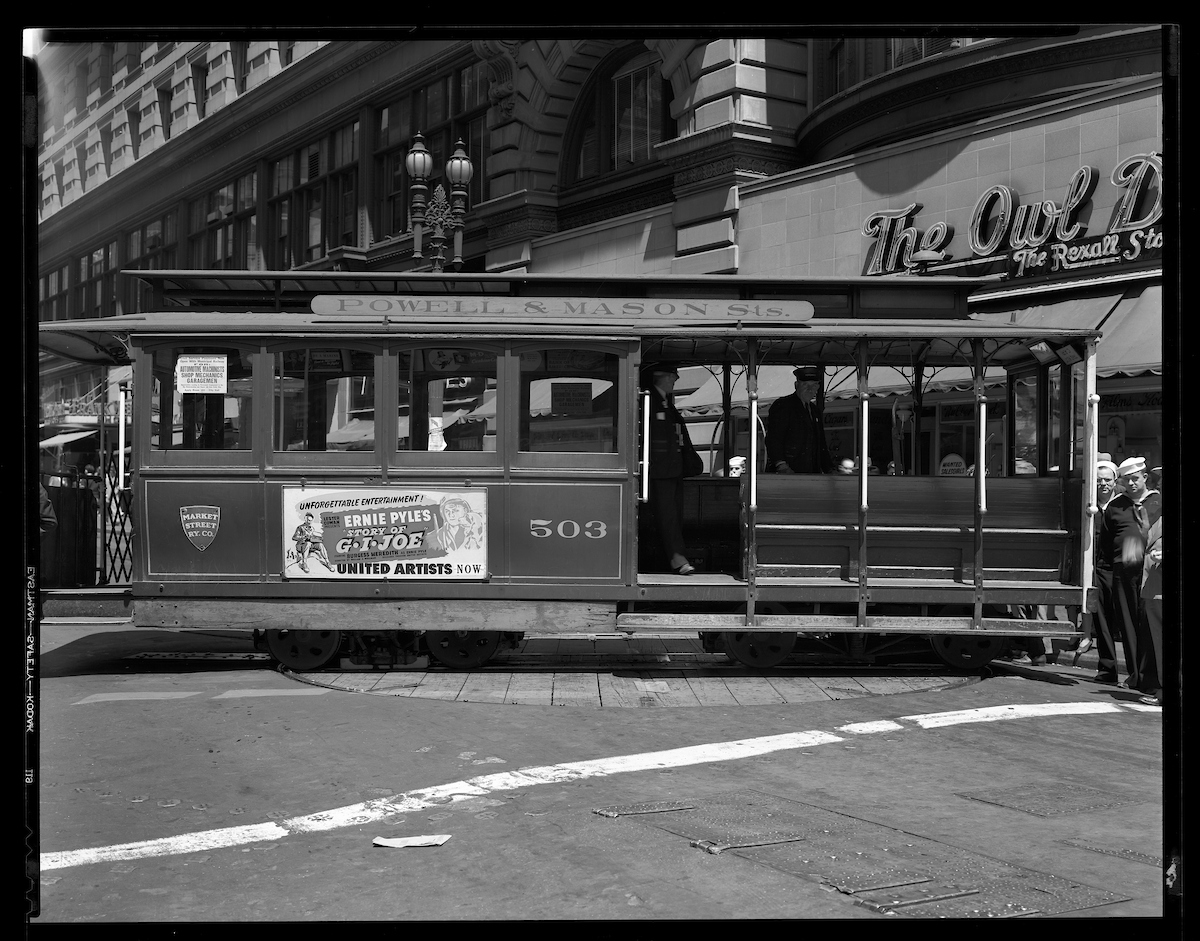 Powell Street Cable Car 503 at Market and Powell Street Turntable | August 13, 1945
Powell Street Cable Car 503 at Market and Powell Street Turntable | August 13, 1945 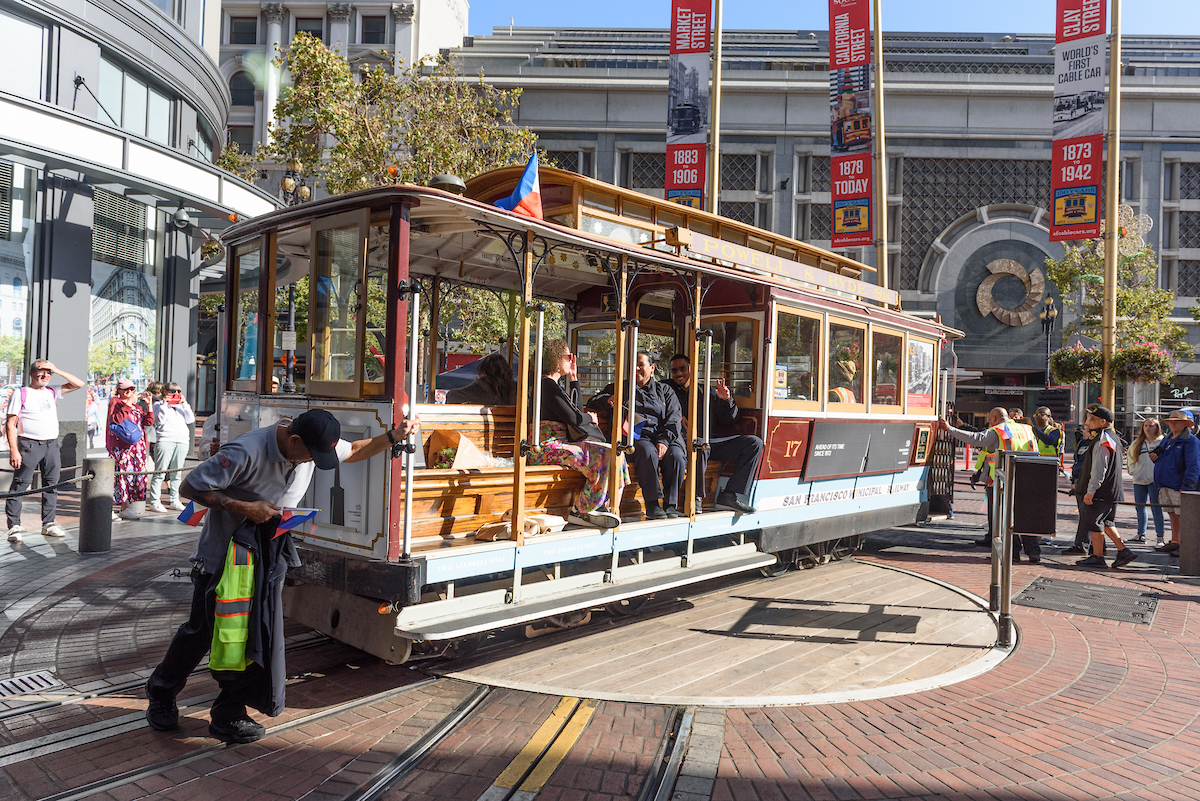 Cable Car ride to celebrate Filipino American History Month | October 11, 2023
Cable Car ride to celebrate Filipino American History Month | October 11, 2023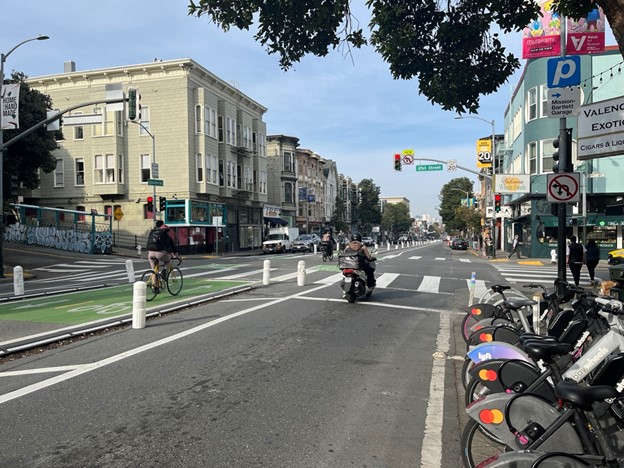
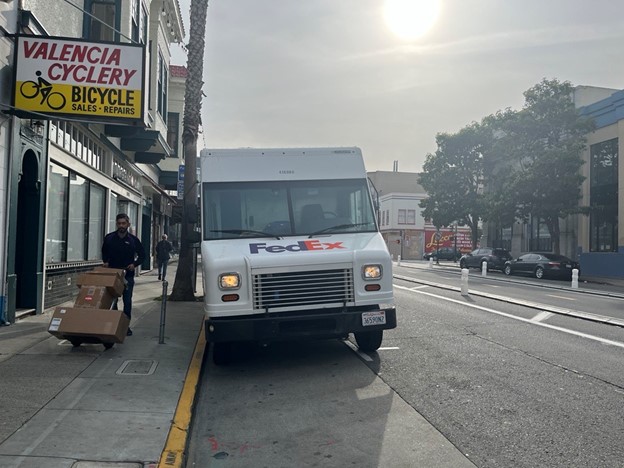
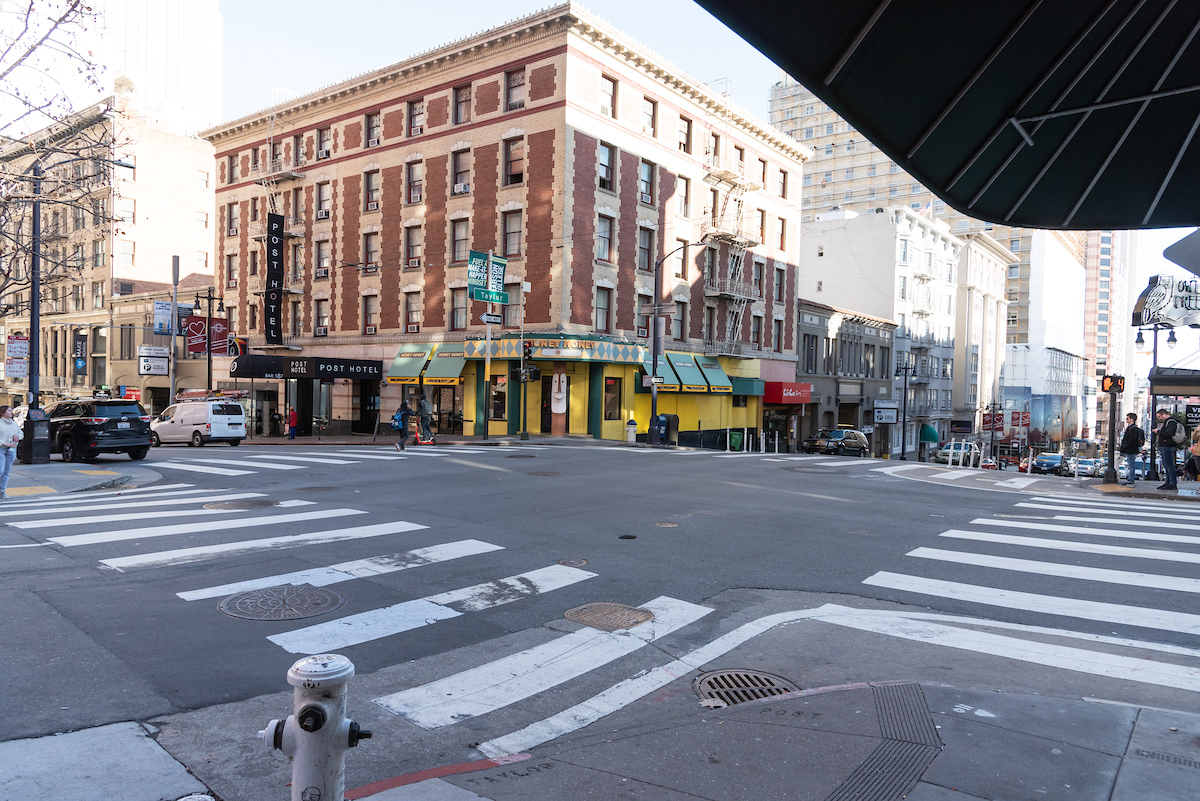 Street safety improvements are coming to San Francisco's Tenderloin with the help of a federal grant.
Street safety improvements are coming to San Francisco's Tenderloin with the help of a federal grant. 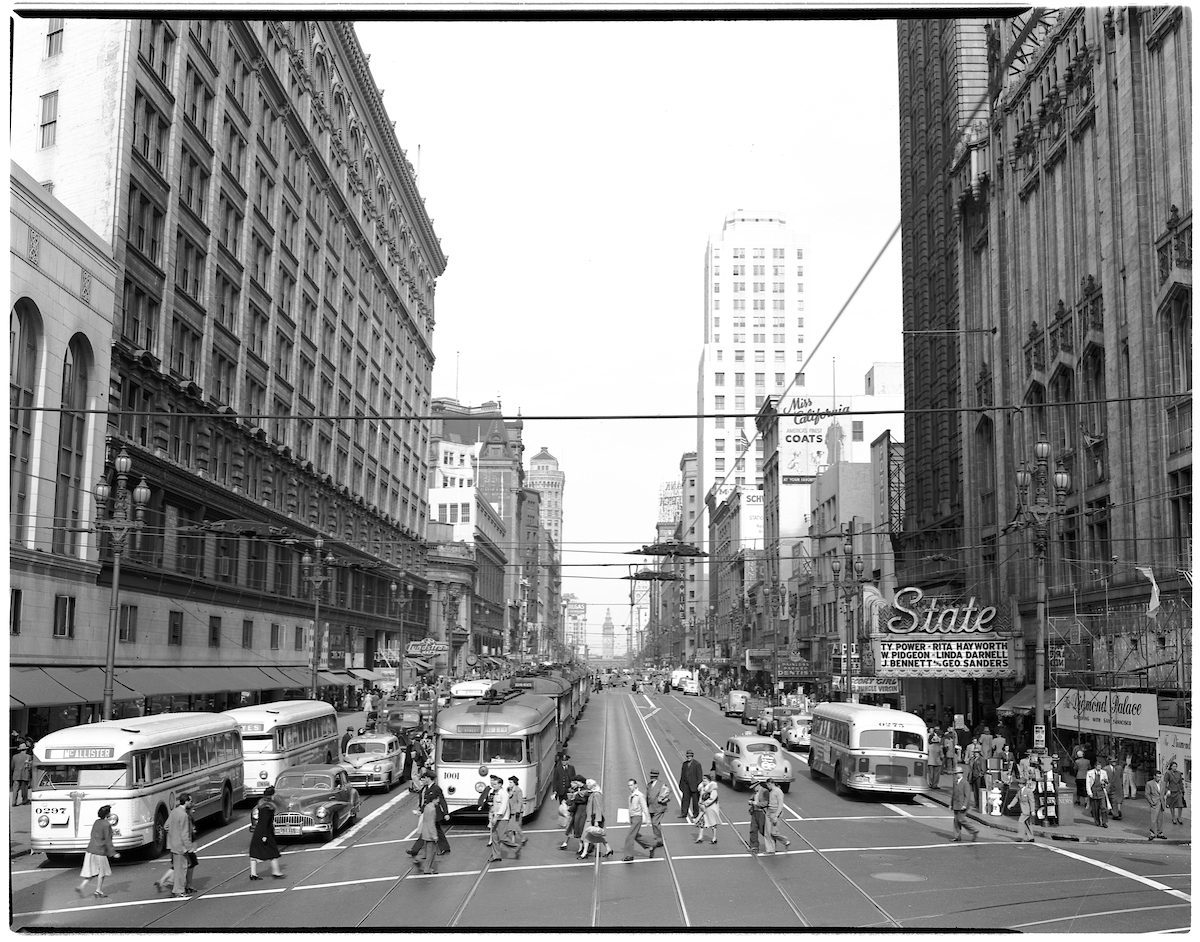 View east towards Ferry Building on Market Street from 4th Street, October 1, 1948.
View east towards Ferry Building on Market Street from 4th Street, October 1, 1948.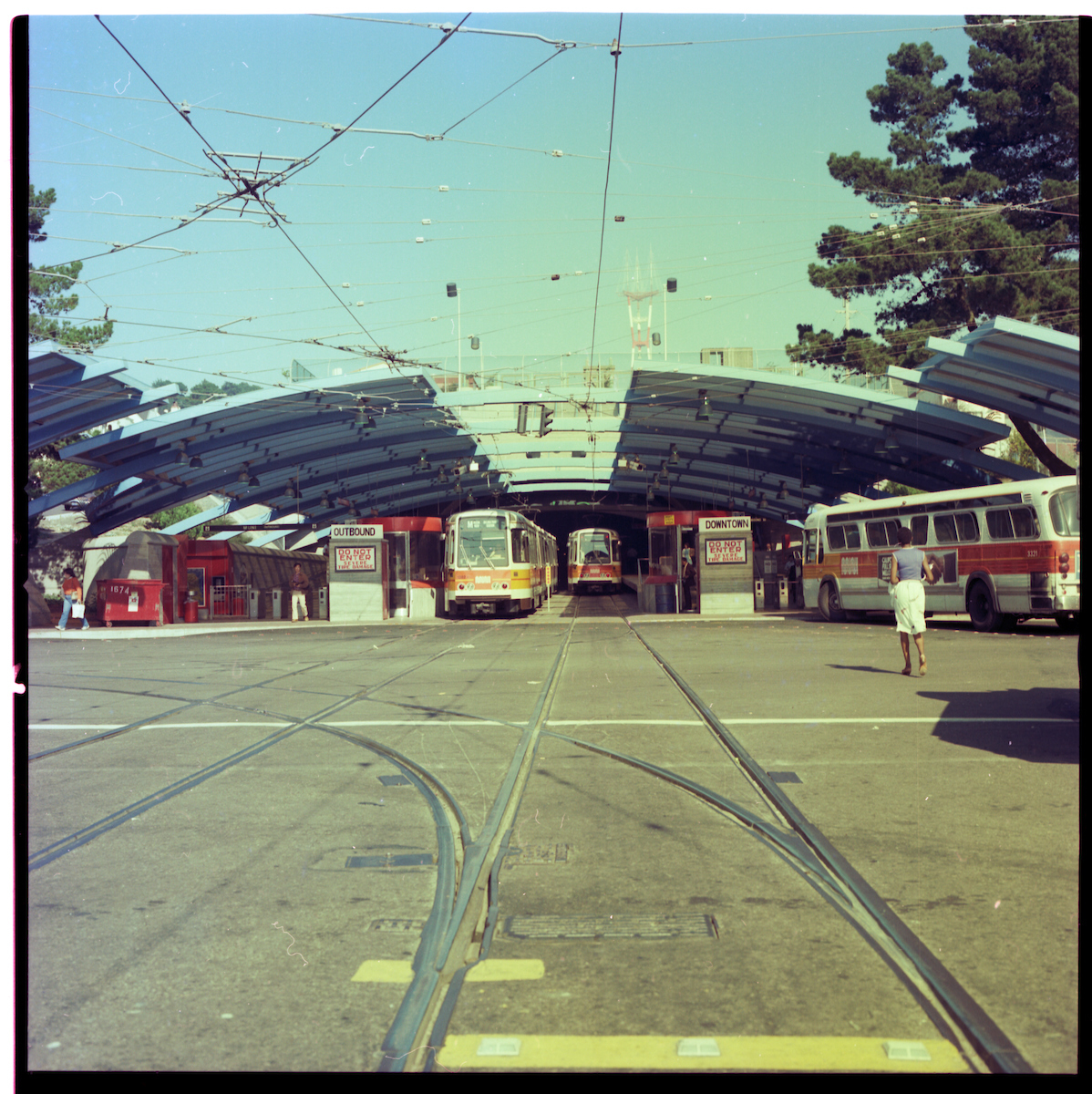 West Portal Station with new Light Rail Vehicles at platform, February 18, 1982.
West Portal Station with new Light Rail Vehicles at platform, February 18, 1982. 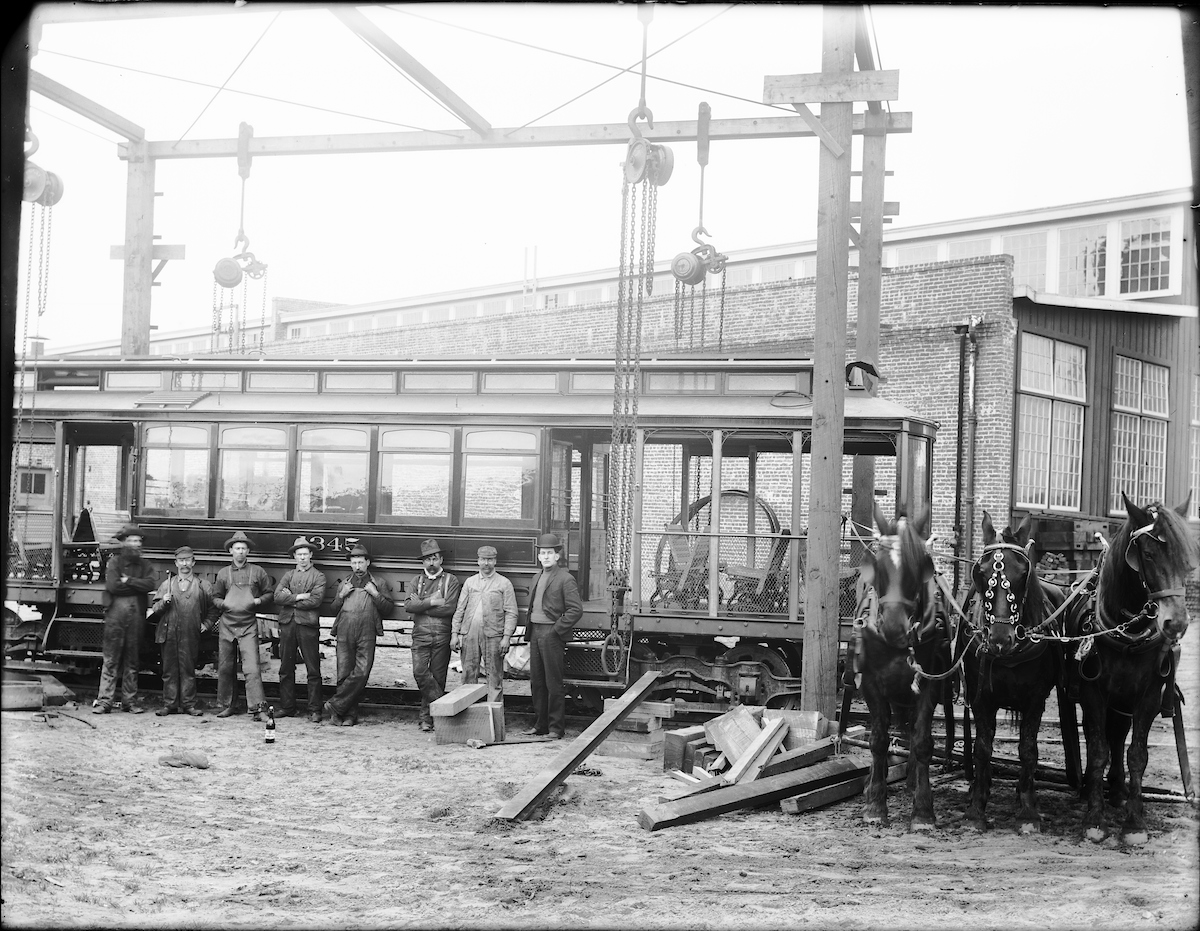 Shop crew with new streetcar and team of horses at Southern Pacific Railroad yard, January 1904.
Shop crew with new streetcar and team of horses at Southern Pacific Railroad yard, January 1904.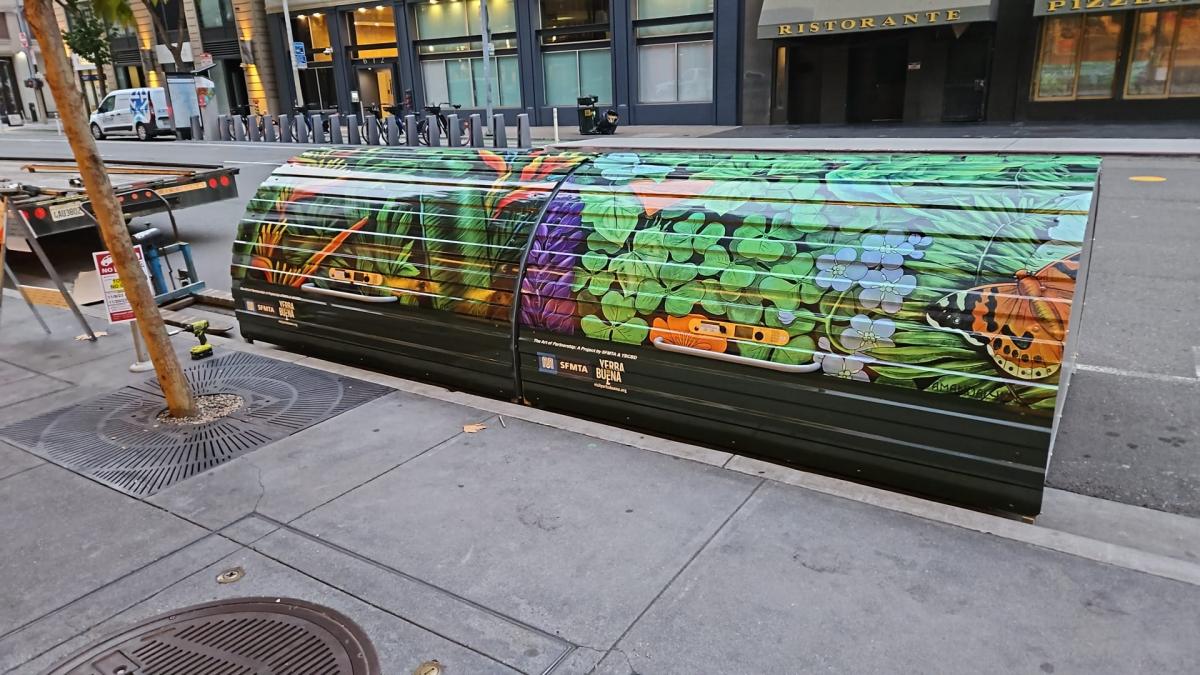 The SFMTA’s new bike hangar storage.
The SFMTA’s new bike hangar storage. 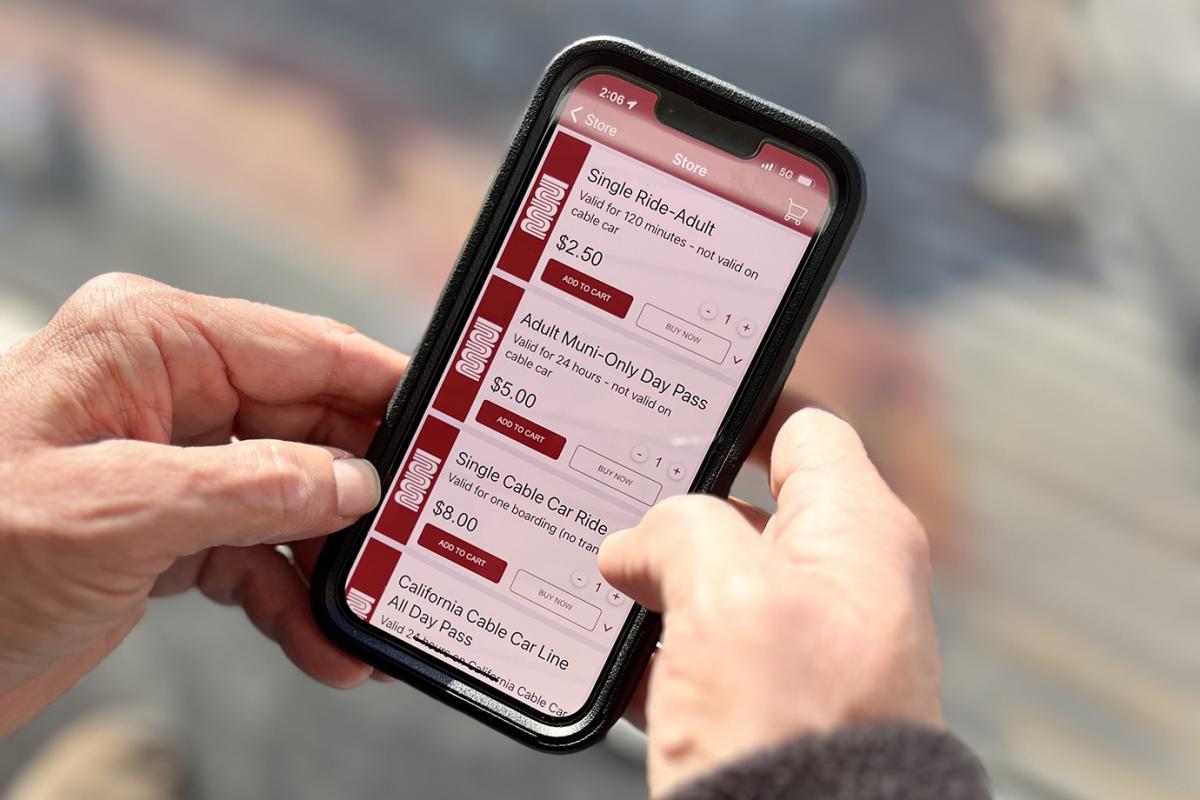


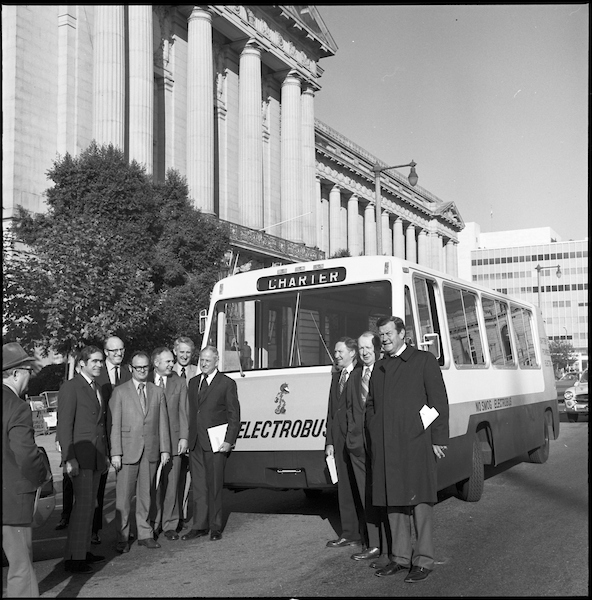
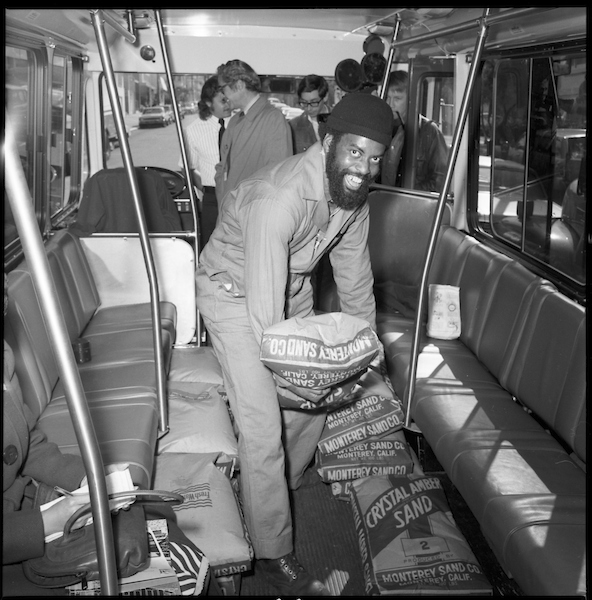
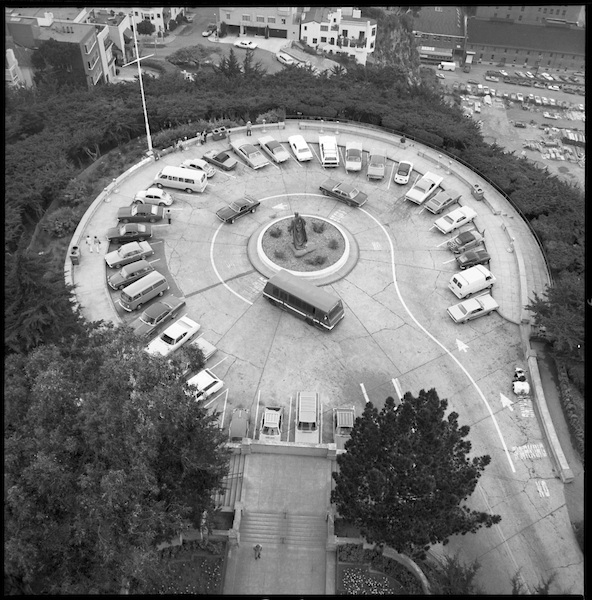
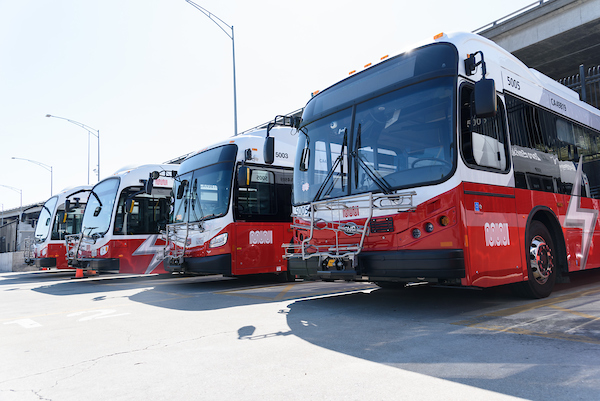
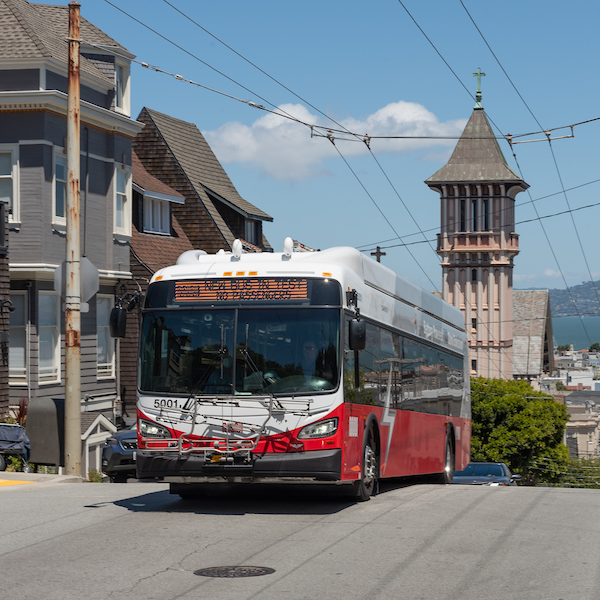
 SFMTA staffers celebrate the launch ride of the 2023 Filipino American History Cable Car.
SFMTA staffers celebrate the launch ride of the 2023 Filipino American History Cable Car.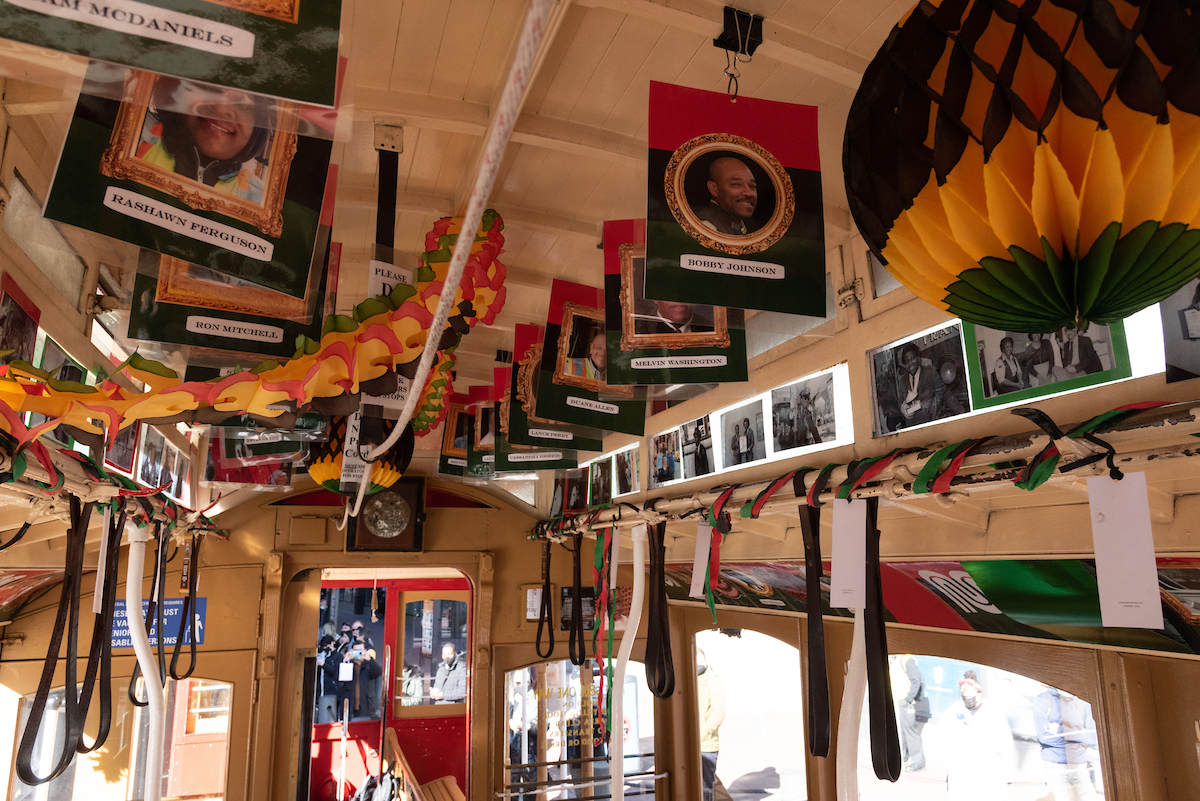 Inside one of the inaugural Black History Month cable cars in 2022.
Inside one of the inaugural Black History Month cable cars in 2022.
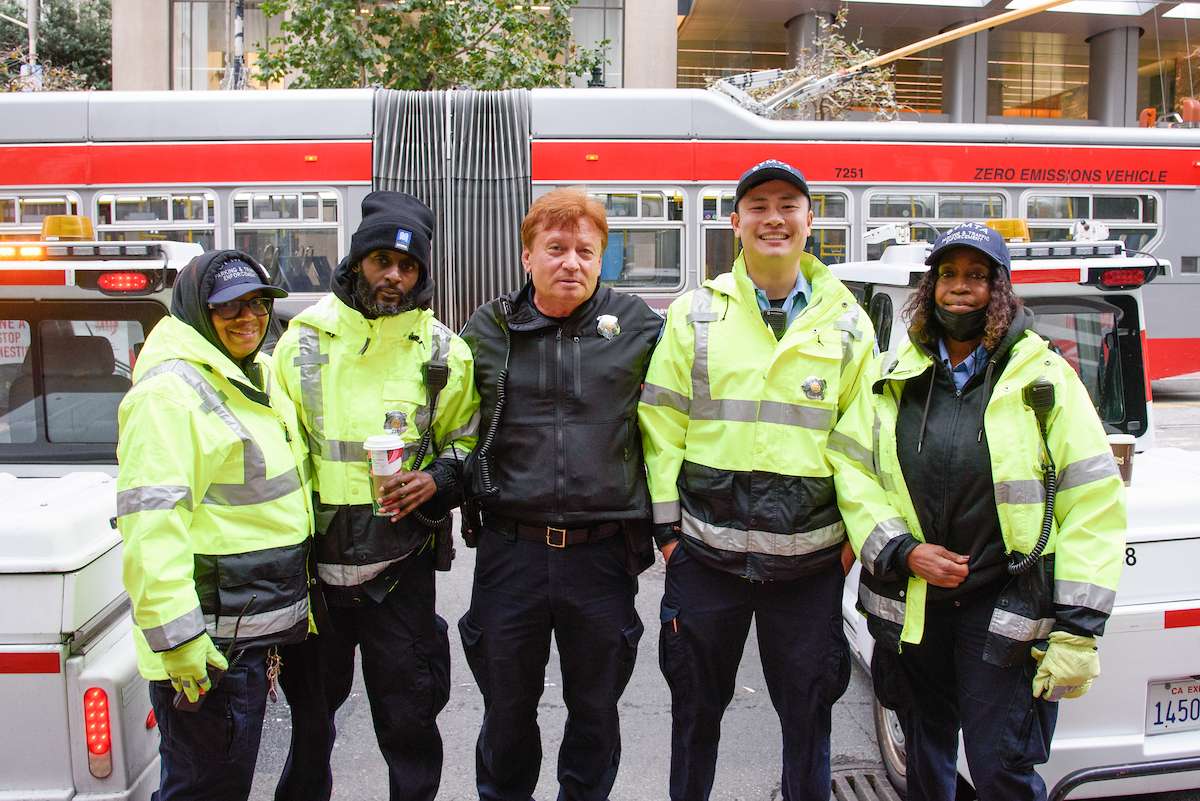 SFMTA security and Parking Control Officers played a key role in creating safe conditions for the APEC conference.
SFMTA security and Parking Control Officers played a key role in creating safe conditions for the APEC conference.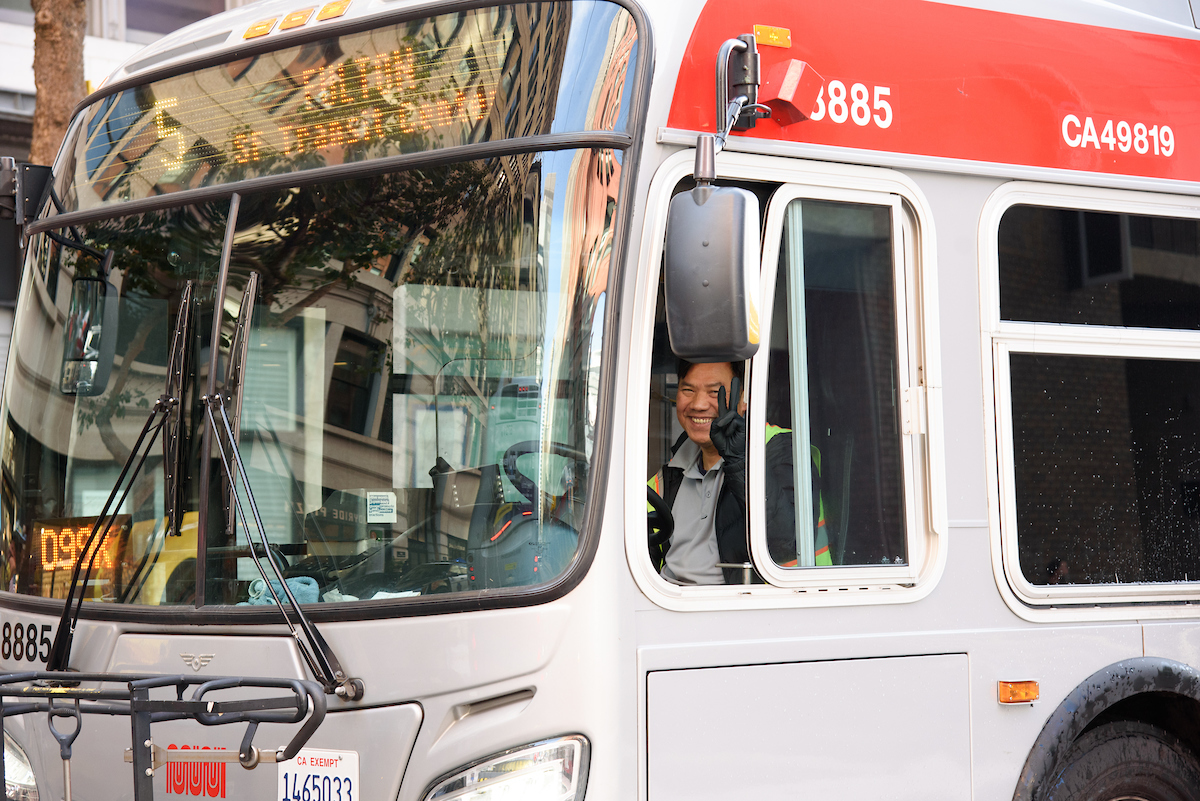 Our Muni transit staff worked hard to create plans around APEC, and harder when those plans faced sudden changes.
Our Muni transit staff worked hard to create plans around APEC, and harder when those plans faced sudden changes.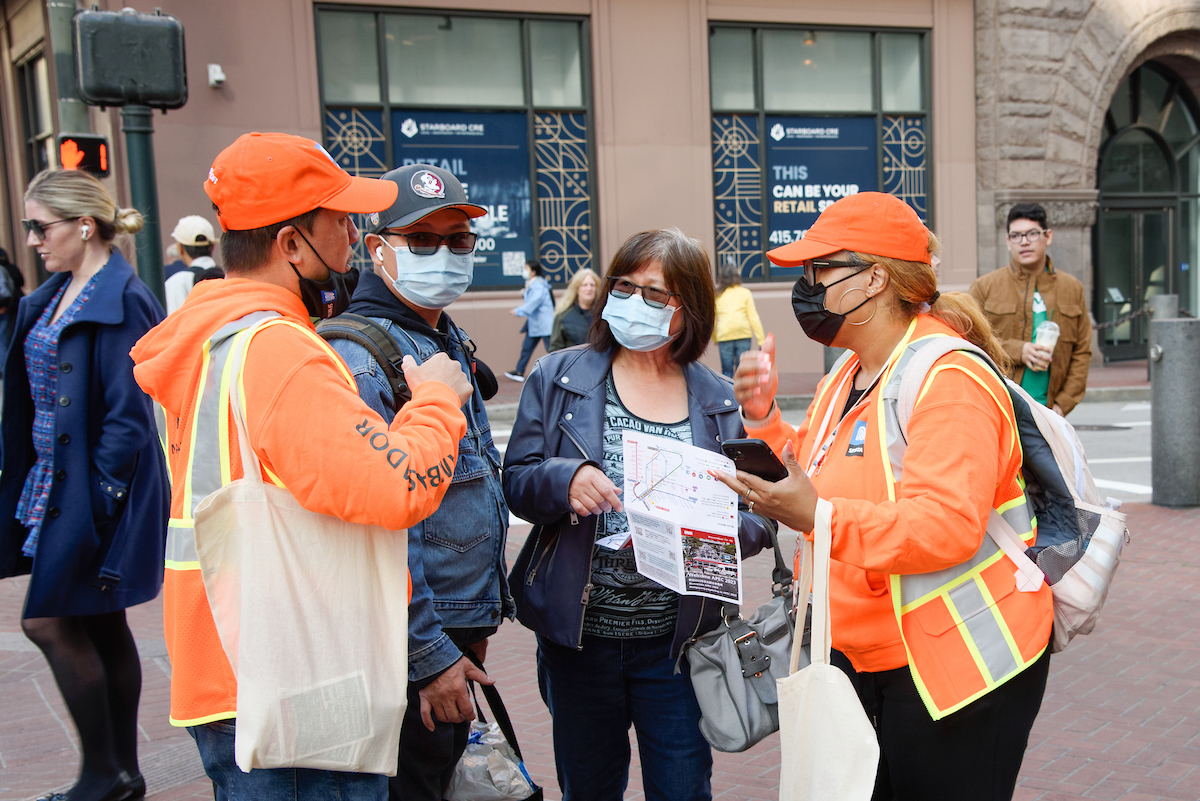 SFMTA staff get dressed in orange to volunteer themselves as ambassadors to help people find their way around San Francisco during large events.
SFMTA staff get dressed in orange to volunteer themselves as ambassadors to help people find their way around San Francisco during large events. 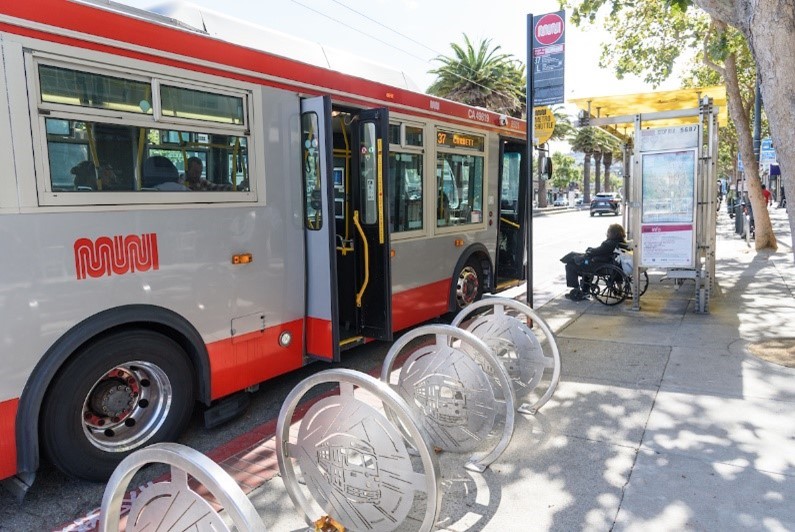
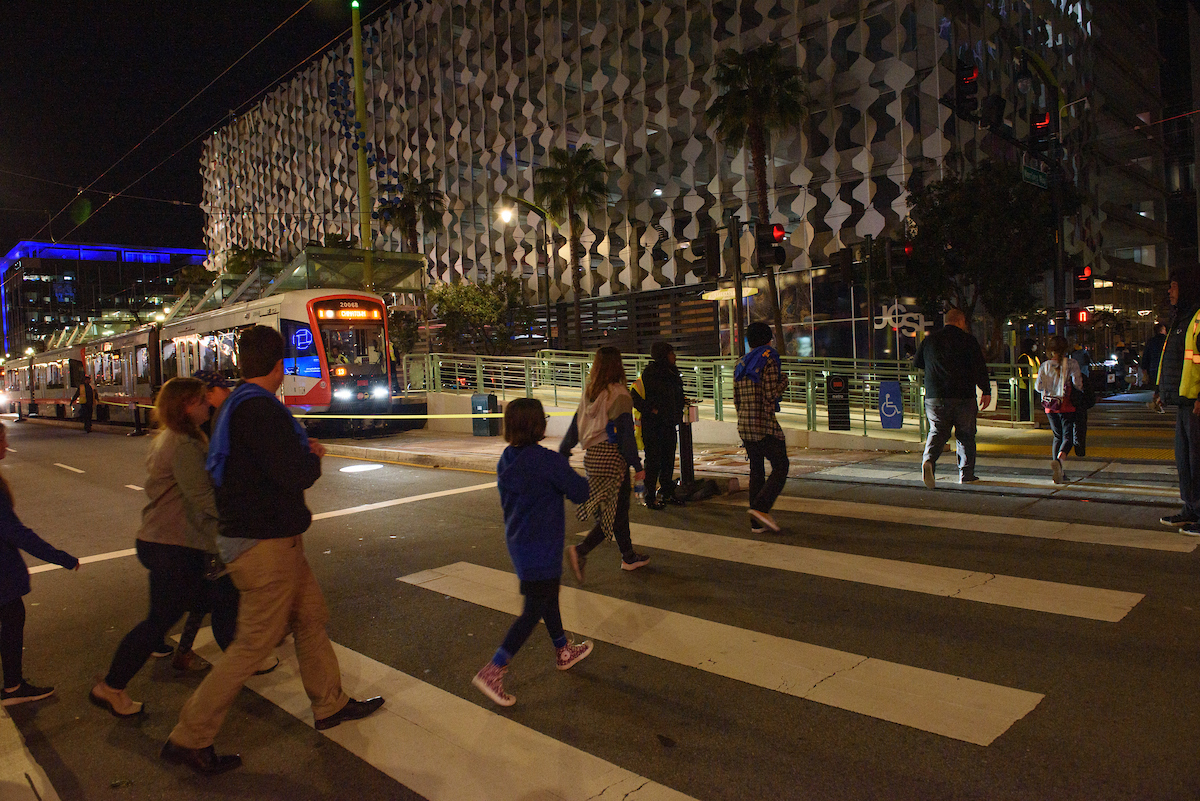 Heading to Chase Center during APEC? Muni is your ride. Here’s what you need to know.
Heading to Chase Center during APEC? Muni is your ride. Here’s what you need to know. 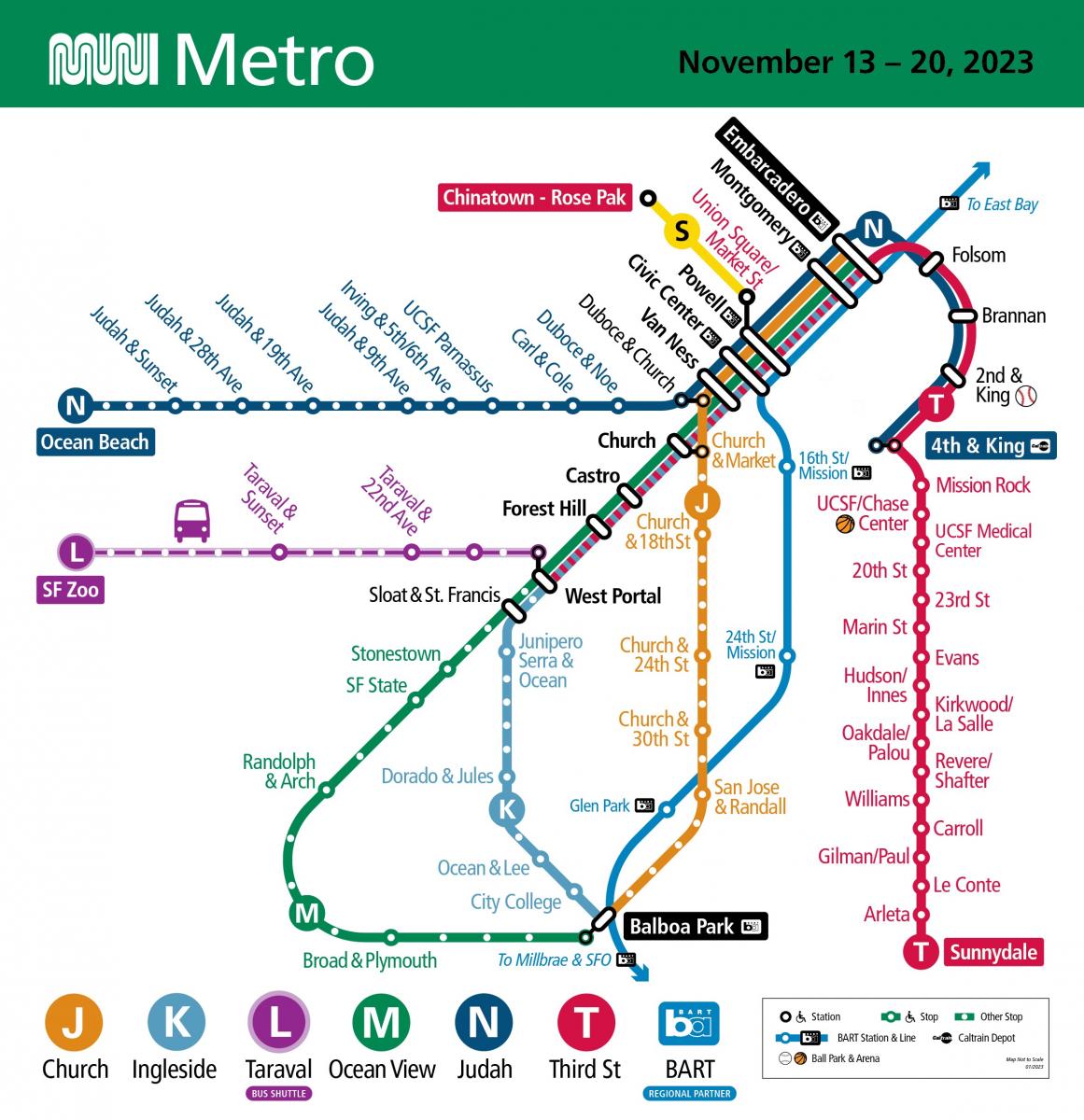 Map of the temporary Muni Metro routing changes during APEC.
Map of the temporary Muni Metro routing changes during APEC. 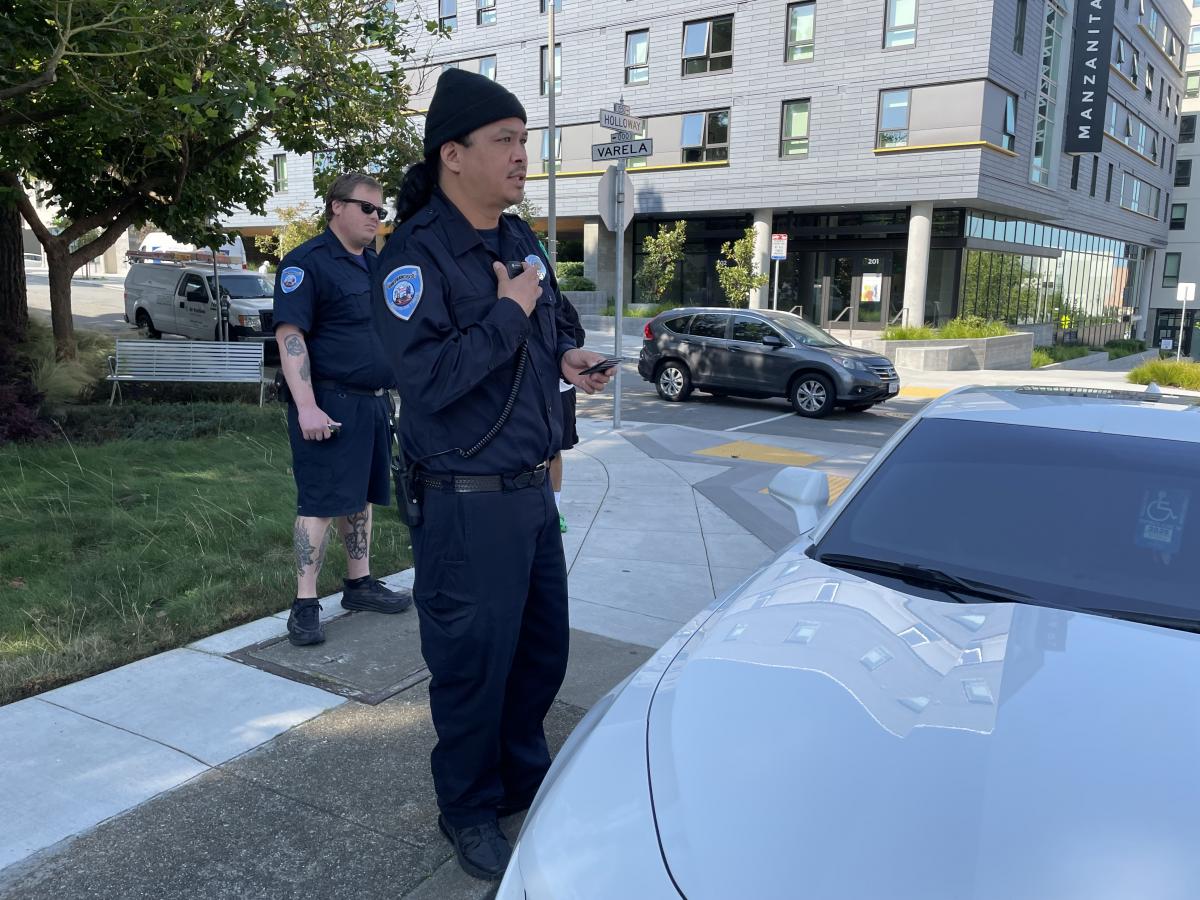 SFMTA Parking Control Officers Scott Ong and Todd Baxter inspect a car to make sure its Disabled Person Parking Placard is compliant.
SFMTA Parking Control Officers Scott Ong and Todd Baxter inspect a car to make sure its Disabled Person Parking Placard is compliant. 